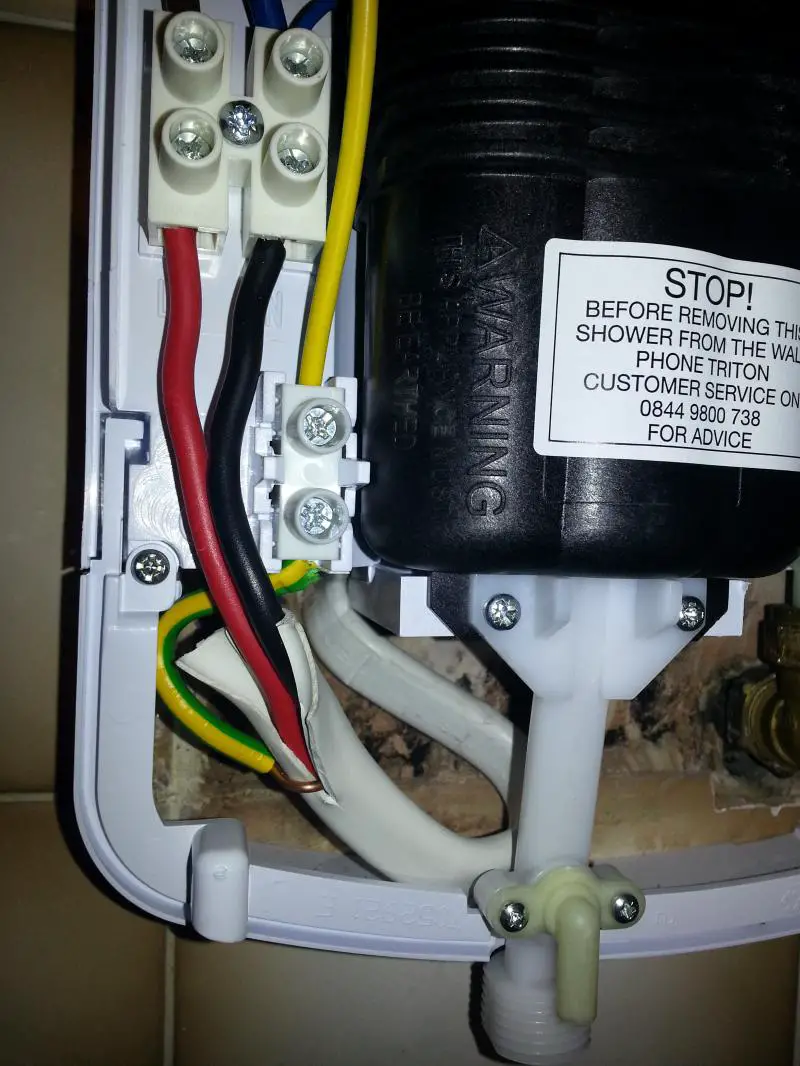Hello.
I have what seems like a pretty basic electric question.
I'm replacing an electric shower 8.5kw and the terminal block is slightly lowerthan the last and hence have excess cable. Now I know that I should probably trim the excess but incase I ever replace the shower again I would rather keep the slight excess. It's not easy to pull the cable from behind the shower which is in the loft.
So the excess has caused a bend in the cable. I'd like to know if this bend is to excessive and likely to cause problems eg heating up or melting over time.
Hopefully the picture is clear.
Please don't shoot me down. .. this is a DIY forum and have asked the question just in case.
Any advice would be appreciated.
I have what seems like a pretty basic electric question.
I'm replacing an electric shower 8.5kw and the terminal block is slightly lowerthan the last and hence have excess cable. Now I know that I should probably trim the excess but incase I ever replace the shower again I would rather keep the slight excess. It's not easy to pull the cable from behind the shower which is in the loft.
So the excess has caused a bend in the cable. I'd like to know if this bend is to excessive and likely to cause problems eg heating up or melting over time.
Hopefully the picture is clear.
Please don't shoot me down. .. this is a DIY forum and have asked the question just in case.
Any advice would be appreciated.


